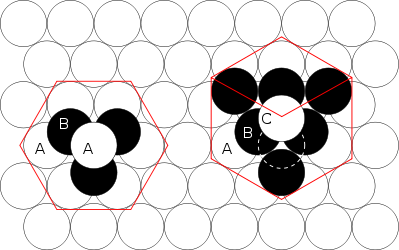E8 Is the Best
Posted by John Baez
As you may have heard, Maryna Viazovska recently proved that if you center spheres at the points of the lattice, you get the densest packing of spheres in 8 dimensions:
• Maryna S. Viazovska, The sphere packing problem in dimension 8, 14 March 2016.
The lattice is
and the density of the packing you get from it is
Using ideas in her paper, Viazovska teamed up with some other experts and proved that the Leech lattice gives the densest packing of spheres in 24 dimensions:
• Henry Cohn, Abhinav Kumar, Stephen D. Miller, Danylo Radchenko and Maryna Viazovska, The sphere packing problem in dimension 24, 21 March 2016.
The densest packings of spheres are only known in dimensions 0, 1, 2, 3, and now 8 and 24. Good candidates are known in many other low dimensions: the problem is proving things, and in particular ruling out the huge unruly mob of non-lattice packings.
For example, in 3 dimensions there are uncountably many non-periodic packings of spheres that are just as dense as the densest lattice packing! There are also infinitely many periodic but non-lattice packings that are just as dense.
In 9 dimensions, the densest known packings form a continuous family! Only one comes from a lattice. The others are obtained by moving half the spheres relative to the other half. They’re called the ‘fluid diamond packings’.
In high dimensions, some believe the densest packings will be periodic but non-lattice.
For a friendly introduction to Viazovska’s discoveries, see:
• Gil Kalai, A breakthrough by Maryna Viazovska leading to the long awaited solutions for the densest packing problem in dimensions 8 and 24, Combinatorics and More, 23 March 2016.
I’m no expert on this stuff, but I’ll try to get into a tiny bit more detail of how the proofs work.
In 2001, Henry Cohn and Noam Elkies proved that the densest packing in 8 dimensions could be no more 1.000001 times as dense as that coming from the lattice. They showed that you could prove this kind of bound by finding a function
whose Fourier transform has certain nice properties. This is the avenue of attack that Viazovska pursued. She improved the bound from 1.000001 to 1.
To actually find her function , she needs to take the Laplace transforms of some modular forms and prove some fancy estimates about them. There are deep connections between lattices and modular forms, which I imagine are relevant here. I don’t understand this stuff very well.
However, the properties she needs her function to have are remarkably simple! Thanks to the work of Cohn and Elkies, it suffices to find a function with these properties:
is radial: depends only on , the distance from to the origin.
is a Schwartz function: it and all its derivatives decrease faster than the reciprocal of any polynomial.
, where is the Fourier transform of .
for all .
for all with .
Getting 1-4 would be easy: do you see how to do it? But getting 5 as well makes it hard. If we flipped the inequality in 5, the whole thing would be easy: do you see why?
I find it utterly wonderful that the problem of finding this function — a challenge that any analyst might enjoy — turned out to be the key to proving that is the best lattice in 8 dimensions. It hints at the unity of mathematics.


Re: E8 Is the Best
I’ll take a punt at the question why the first 4 conditions on their own is “easy”: these are satisfied by a radial Gaussian with a “scale” of π. Then both the original values and the frequency values are greater than 0 (the opposite sign to condition 5). The Gaussian is often used as an example of Schwartzness.